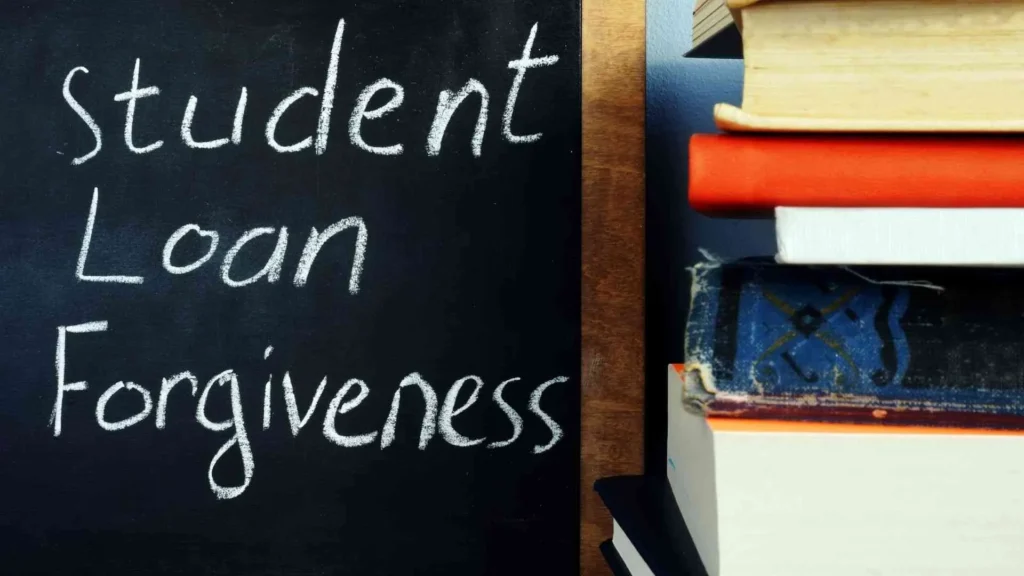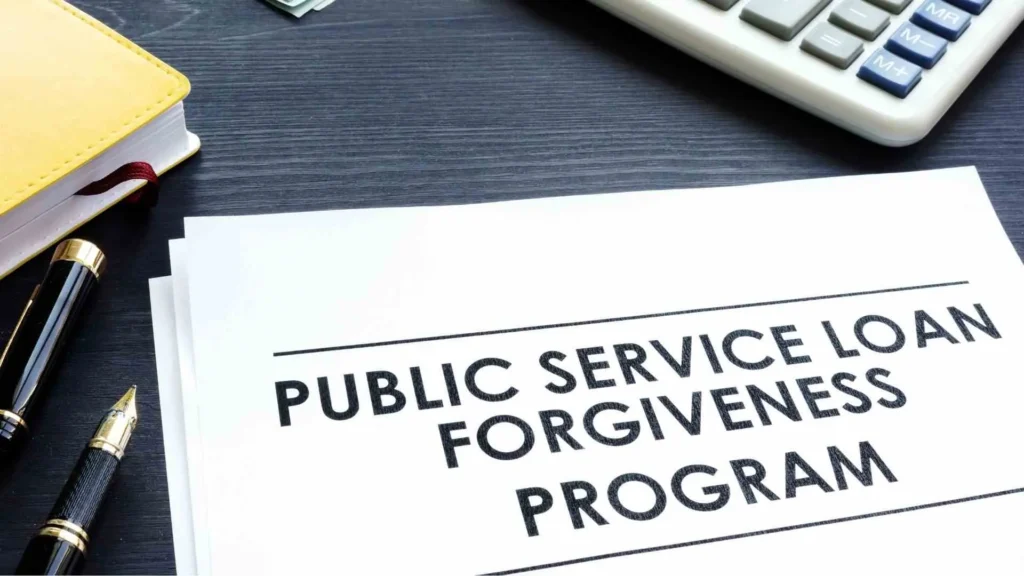Teachers, like other professionals, aim to rid themselves of financial burdens as they approach retirement. However, today, a significant number of Americans reaching retirement age face the challenge of high debt levels comparable to those of younger adults.
Forbes presents findings from the Consumer Finance Survey, revealing that the percentage of households headed by adults aged 65 or older with debt soared from 41.5% in 1992 to a staggering 60% in 2016.
Fortunately, teachers have access to various forms of government-funded financial assistance.
Once again, understanding what is driving this trend and the mechanisms older teachers can use to help them overcome financial issues may be the solution to the growing debt problem.
You’ll learn:
- Contributing factors to the indebtedness of retired Americans
- Options for Loan Forgiveness Programs for Teachers
- How to assess the best Loan Forgiveness Programs for Teachers in your case
Common Financial Factors Leading to Debt for Retired Teachers
Rising Healthcare Costs
Healthcare expenses are a major contributor to the debt of older individuals. It’s often challenging to predict how much medical care will cost in retirement—and many American educators don’t save enough.
According to Fidelity, a couple aged 65 may need to save $315,000 just for healthcare expenses in retirement, even with Medicare.

Medicare doesn’t cover many services commonly needed by older adults, such as certain prescription medications, hearing aids, and long-term care. Many seniors accrue debt paying for critical medical care as their health declines.
With no room in their budgets, it’s common for many older Americans to turn to credit cards, accumulating growing balances to pay for medicine and other essential needs.
Retirees Still Paying Student Loans
The director of corporate partnerships and engagement at the National Council on Aging states that approximately 3.5 million Americans aged 60 and older are still making student loan payments. Together, they owe over $125 billion in student loans.
This trend highlights another facet of indebtedness: the number of older student loan borrowers is also increasing in the country, with retirees acting as co-signers for children in certain cases.
Managing debt while living on a fixed income can be challenging. However, there are resources to help retired teachers tackle debt and build stronger financial habits.
Options for Loan Forgiveness Programs for Teachers
First and foremost, it’s important to note that while there’s no guarantee of loan forgiveness, educators working in certain specific types of schools for a contracted period have a significant chance of success. As with all financial agreements, individuals with more stable careers are more likely to gain access.
There are four main options for loan forgiveness programs for teachers: Public Service Loan Forgiveness, Teacher Loan Forgiveness, Perkins Loan Cancellation for Teachers, and state-sponsored teacher loan forgiveness programs.

Delving into the requirements and workings of each is crucial for effective decision-making. A teacher may be eligible for one program but not for another, as you’ll see in each option below:
Public Service Loan Forgiveness (PSLF) Program
The PSLF program offers considerably broad access, as it does not require you to work in a low-income public school. Essentially, this program necessitates that you work for a qualifying employer. This includes government organizations at any level (federal, state, local, or tribal) or nonprofit organizations that are tax-exempt under Section 501(c)(3) of the Internal Revenue Code.
Furthermore, PSLF mandates that the teacher must have Direct Loans. If you have other types of federal loans, such as Perkins Loans, you need to consolidate those loans for them to qualify.
This guidance suggests that to make the most of the Public Service Loan Forgiveness (PSLF) Program, it’s advisable to repay your loans on an income-driven repayment (IDR) plan.
An IDR plan adjusts your monthly payments based on your income and family size, making them more affordable and increasing your likelihood of meeting the loan forgiveness requirements within the PSLF program.
By opting for an IDR plan, you can ensure that your monthly payments are proportionate to your ability to pay, taking into account your income and other financial circumstances.
This not only makes payments more manageable in the short term but can also result in greater loan forgiveness in the long term, as each payment made while on an IDR plan counts towards the 120 payments required to qualify for PSLF forgiveness.
One of the standout benefits of PSLF is that forgiven loan amounts are not considered taxable by the United States Internal Revenue Service (IRS).
Teacher Loan Forgiveness (TLF)
The Teacher Loan Forgiveness (TLF) Program, the benefit offers the opportunity for forgiveness of up to $17,500 in Direct or Federal Stafford loans after completing five consecutive years of teaching at a qualifying school.
Eligibility and Criteria
- Must have been employed as a full-time teacher at an eligible school for five complete and consecutive academic years.
- At least one of these years must have occurred after the 1997-1998 academic year.
- Certain highly qualified teachers in specific areas may qualify for larger amounts of forgiveness.
- PLUS Loans and Perkins Loans are not eligible for forgiveness under this program.
Additional Instructions
- It’s not possible to receive credit for both TLF and (PSLF) for the same period of service.
- To maximize the value of forgiveness, one can apply for a TLF Forbearance, meaning they won’t have to make monthly loan payments during the qualifying period.
- It’s important to note that borrowers with a loan balance greater than the maximum forgiveness amount for which they are applying are not eligible for this type of payment suspension.
Practical Application
Consider a scenario where a special education teacher works at an eligible low-income school and has a $10k loan balance. She aims to qualify for Teacher Loan Forgiveness by paying off the balance over four years but does not wish to make payments during this time because reducing her loan balance would decrease the amount of forgiveness.
In such a case, the educator can apply for a TLF forbearance, which allows her to avoid making loan payments and receive the maximum loan forgiveness possible.
Cancellation of Perkins Loans for Teachers
You may be eligible to have all or part of your Federal Perkins Loan canceled ( based on your employment or volunteer service) or discharged (under certain conditions).
If you qualify for cancellation of your Perkins Loan for any of the Teacher/Education categories listed below, up to 100% of your loan may be canceled in the following increments:
- 15% per year for the first and second years of service
- 20% for the third and fourth years
- 30% for the fifth year
Each amount canceled per year includes the interest accrued during that year.
You may also qualify for deferment while performing teaching services that qualify for loan cancellation. Don’t hesitate to get in touch with your college or your college’s Perkins Loan servicer for information on how to apply for deferment.
Conditions for Perkins Loan Cancellation for Teachers
This program forgives up to 100% of your Federal Perkins Loan(s) if you teach full-time at a low-income school or if you teach certain subjects.
If you are eligible for this program, up to 100% of the loan may be canceled for teaching service in the following increments:
- 15% canceled per year for the first and second years of service
- 20% canceled for the third and fourth years
- 30% canceled for the fifth year
Additionally, it’s important to know that even if you don’t teach at a low-income school, you may still qualify if you teach mathematics, sciences, foreign languages, bilingual or special education, or a different discipline determined by your state’s education agency to have a shortage of qualified teachers in your state.
Private school teachers may qualify if:
- The school has established its nonprofit status with the Internal Revenue Service (IRS), and
- The school provides elementary and/or secondary education in accordance with state law.
Perkins Loan Discharge
Under certain conditions, your Perkins Loan may be discharged. These conditions include bankruptcy, death, school closure, service-connected disability (for veterans), being the spouse of a victim of the events of September 11, and total and permanent disability.
State Sponsored Student Loan Forgiveness Programs
If you’ve sought support from federal aid programs and found success, don’t lose hope; there are state-level options for teacher assistance.
State-based loan forgiveness programs have been developed to provide loan repayment assistance to residents who borrowed money to fund their higher education, whether at the undergraduate or graduate level.
Unlike federal forgiveness programs, Loan Repayment Assistance Programs (LRAPs) typically do not automatically discharge a portion of your balance. Instead, they offer funds that you can apply towards your student loans, usually in exchange for qualified service. In essence, the state employs you in a role that enables you to pay off your debt.
This arrangement permits you to use the assistance received from an LRAP to pay off both federal and private student loans, in certain cases. This is different from federal forgiveness programs, which only cover loans issued by the U.S. Department of Education.
Specifically, each state has its forgiveness programs and eligibility requirements. The American Federation of Teachers offers a searchable database to find forgiveness options in the state where you work. You can search until you locate a scenario that matches your situation, such as subject, grade level, educational position, and more.
It’s also important to note that while you may qualify for various forgiveness programs, you might not be eligible to apply for all of them simultaneously. Consulting with a financial advisor to determine the best options for you based on your loan type, how much you owe, and where you live is a significant step in making an informed decision about your financial future.
Final Considerations
In conclusion, debt repayment poses a distinct challenge, especially for individuals on fixed incomes. The pressure of managing essential expenses while dealing with debt can lead to stress and anxiety, a situation particularly relevant for retired teachers striving to balance their budgets.
It’s crucial to note that in some cases, you may qualify for more than one federal loan forgiveness program. However, it’s vital to carefully consider each option, as selecting one program may affect your eligibility for others.
Keep in mind that refinancing comes with its own set of risks; you should only consider refinancing if it suits your financial circumstances. Evaluate your unique circumstances and seek professional guidance when deciding which loan forgiveness program to pursue!

About Author
Bill Wallace blends his academic background in Literature with his ventures in International Business and finance. His professional journey took him across Europe, especially in Spain, where his passion for writing evolved. Since then, armed with his literary finesse and investment acumen, he has been crafting financial content for teachers worldwide. More about me.
Similar Read:





